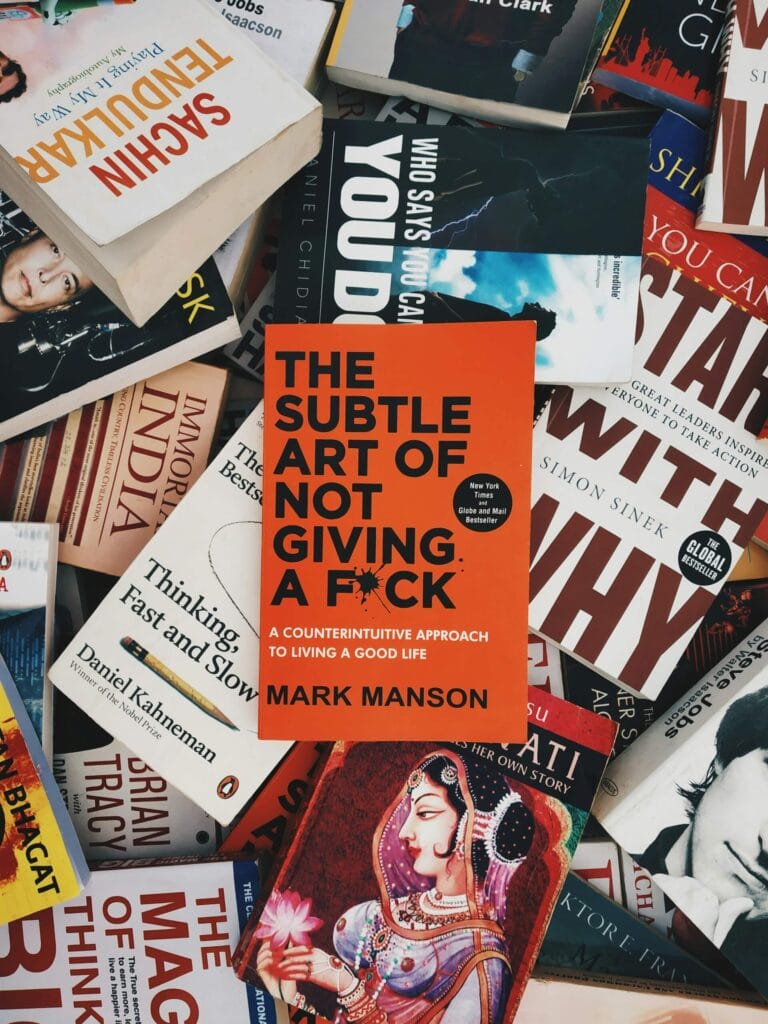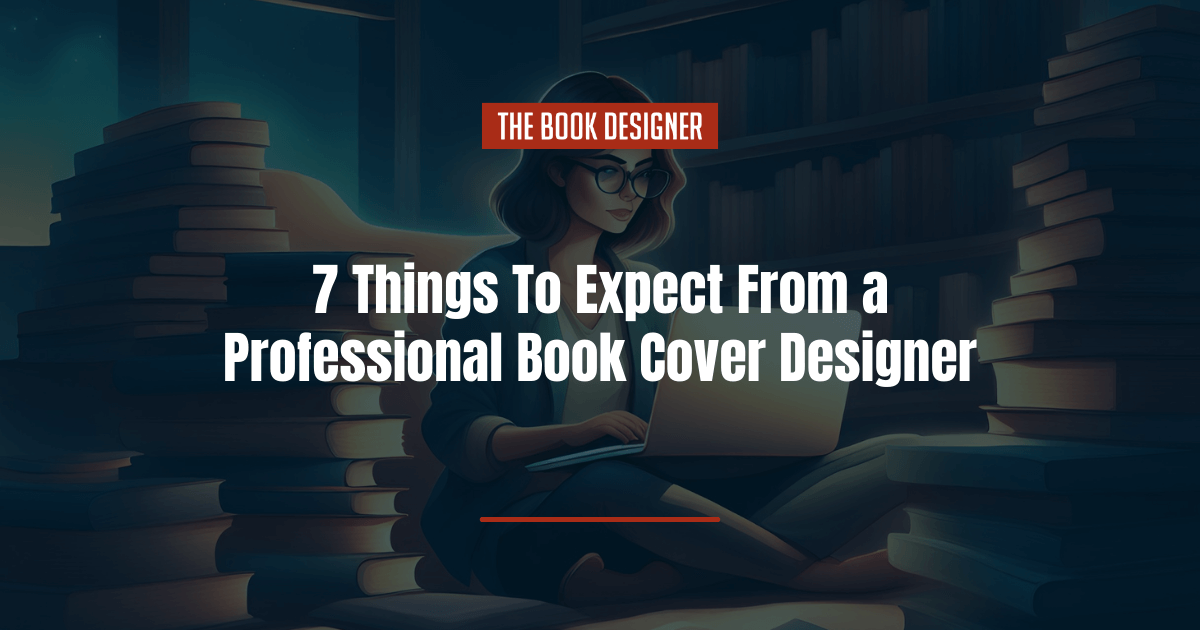Writing a book is one thing, but preparing it for publication is quite another. One of the integral steps to take in publishing your book is creating a book cover. If you’re working with a tight budget or you have design skills, you may decide to design your book cover yourself. But if you don’t have advanced design skills, but have some cash to spare, you should consider hiring a professional book cover designer.
In this article, you’ll learn why you should work with a professional book cover designer, some tips for working with one, and what to expect during the work relationship.
Learn what to expect from working with a professional book cover designer:
Why You Should Work with a Professional Book Cover Designer

“Don’t judge a book by its cover” is an axiom that many readers, myself included, gloss over. When your book is stacked up against many others on a shelf, the cover is solely responsible for drawing the attention of perusers to your work. Because of how crucial a book cover is to the success of a book, you need someone who can design a cover that is not only eye-catching, but also adheres to the industry’s best standards.
Here are some reasons you should work with a professional book cover designer:
- Genre specificity: Different literary genres have distinct design conventions. A professional book cover designer knows these conventions and can tailor your book cover to match the expectations of readers in your genre, increasing its market appeal. This includes using the right colors, imagery, and typography that will attract the demographic you want to reach.
- Access to tools: A professional book cover designer has access to advanced design assets, including premium design tools, high-resolution images, and unique fonts. The use of these assets ensures that your book cover stands out among the stack of books on the shelf.
- Evolving market trends: Design trends change, especially in the book industry. A professional book cover designer stays informed about the current trends and standards, ensuring your cover remains relevant and competitive.
- Story representation: A well-designed cover captures the essence of your story and communicates it visually. A professional book cover designer knows how to encapsulate the mood and themes of your book in a way that will resonate with readers.
- Brand consistency: If you’re an established author, a professional designer ensures that your book cover aligns with your brand identity. Consistency in book cover design helps build recognition among readers.
3 Practical Tips for Working with a Professional Book Cover Designer
When working with a professional book cover designer, there are some things you can do to ensure that your collaboration with them yields sufficient results. Here are three of them:
1. Create a Design Brief
A design brief is a document that provides essential guidelines and information to a designer before they begin a project. This document serves as a roadmap that aligns your expectations with the designer’s understanding of the project, ensuring an efficient and successful collaboration.
Here are some things to include in a design brief:
- A brief description of the project, its purpose, and its intended audience;
- Clearly defined goals and vision that the design should achieve;
- Information about your book’s target audience, including the demographics, preferences, and any specific considerations that should influence the design;
- Your preferred style, color schemes, imagery/symbolism, and typography;
- The emotion or message you want to convey through the book cover;
- The expected timeline for the project, including key milestones and deadlines;
- If applicable, include details about existing brand guidelines the designer should adhere to, including color schemes and fonts;
- Samples of book covers that you like, to help the designer understand your aesthetic preferences;
- Information about your budget.
2. Be Collaborative
Foster a collaborative environment by valuing your designer’s expertise. While it’s essential to convey your preferences, you should also trust your designer, and be open to their creative input and suggestions.
Professional book cover designers bring a wealth of insights to the table, and a collaborative approach often leads to a polished end product that meets (or even exceeds) your expectations.
3. Offer Timely and Constructive Feedback
During the design process, the designer will send you drafts of the book cover. Respond promptly to these drafts and provide constructive feedback. Highlight what works well and be specific about areas that may need adjustments.
Clear and timely communication fosters a strong working relationship, reduces the likelihood of misunderstandings, and ensures that the final design aligns closely with your vision for the book.
What to Expect from a Professional Book Cover Designer
When working with a professional book cover designer, here are some things to expect from them:
1. A Well-Organized Portfolio
Before hiring a book cover designer, ask to see their portfolio. A professional-looking portfolio typically includes a designer’s best work and demonstrates their ability to create visually stunning and effective book cover designs. It’s like a visual resume that gives you a glimpse into the designer’s style and versatility.
The content of a designer’s portfolio will help you determine if they have the necessary experience and understanding of design principles to help you execute your project.
2. Understanding of Genre and Target Audience
You should expect your book cover designer to have ample understanding of your genre and your book’s target audience. They should be able to create visuals that capture the essence of the book’s content, attract the right audience, and resonate with the intended readership.
3. Creative Input and Expertise
Professional book cover designers often have years of experience working with different genres, tastes, and aesthetics. So you should anticipate your designer bringing creative ideas and design expertise to the process. You may have a vision for your book cover, but your designer’s input can provide fresh perspectives and innovative solutions to enhance its overall appeal.
4. Adherence to Guidelines and Preferences
Expect your book designer to follow the guidelines provided in the design brief. This includes respecting your preferences regarding color schemes, typography, and any specific imagery or symbolism.
Note: Your preferences may change as the designer shows you other options. Even then, the designer should adhere to your updated preferences.
5. Use of High-Quality and Licensed Images
Professional book cover designers should use high-quality and licensed images. These images enhance the book’s visual appeal, ensure the legality of the designs, and provide a way to support the artists/photographers who created the images. Using licensed images also helps you respect copyright laws and avoid legal issues.
6. Timely Communication and Updates
During your working relationship with a book cover designer, expect timely communication and updates on the progress of the design work. The designer should keep you informed about milestones, share design drafts promptly, and be responsive to feedback or queries.
7. Implementation of Feedback and Revisions
A typical book cover design process involves iterations and revisions. When you provide your feedback on the drafts, you should expect the designer to be receptive to the feedback and make necessary adjustments to refine the design. This ensures you get a final product that meets your (and your readers’) expectations.
Elevate Your Book by Working with a Professional Book Cover Designer
Working with a professional book cover designer increases your chances of getting a book cover that attracts your target audience and gets them to buy your book. This is because professional designers have a wealth of industry experience and access to premium design tools to help you bring your vision to life.




